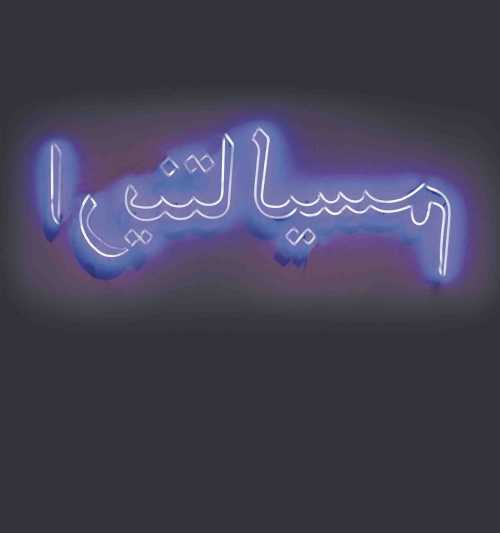About Leila Pazooki
Leila Pazooki is an Iranian installation artist, photographer, collagist, and painter. She completed her primary art education at Tehran Fine Arts Academy. Then she entered Tehran University of Art and graduated in painting in 2000. Later, she went to Germany to continue her education and completed various training courses. In 2002, she studied at the Munich Art Academy in the "new media" field. Then she studied sculpture at the School of Art and Design. Then she went to the University of Berlin and received her master's degree in 2008 in a field titled "Art in Context." At first, Pazooki started her artistic activity with painting, but gradually she became interested in new media and interdisciplinary areas. These experimental mediums provided a more appropriate platform for the emergence and follow-up of Pazooki's ecopolitical concerns. Pazooki's work primarily investigates the concept of borders and how information, language, vernaculars, and cultures are randomly interwoven and cross physical and visual boundaries. In this regard, she has had various experiences in photography, video art, and installation. In her first solo exhibition, Pazooki exhibited her paintings in Golestan Gallery in 1996. Her first experience in the exhibition of interdisciplinary works was in 2005, called "Hydromania" in Tehran's Silk Road Gallery, a combination of photography and installation. Her first experience of international presence happened in the same year, and Pazooki exhibited her artworks at the Nina Menocal Gallery in Mexico City. Since then, she has exhibited her works in galleries in Iran and countries such as the United States, Austria, Germany, and the United Arab Emirates.
In recent years, Pazooki has implemented extensive art projects in international formats. In one example of these projects, hundreds of painters who stayed in a village in China participated. As part of this massive project, Chinese painters copied and reproduced the paintings in Room 17 of the National Gallery, London. In a meaningful choice, Pazooki chose works by a reformist painter named Lucas Kernes for this project. A project that alludes to the economic weakening and cultural centrality of the West due to the rise of China in the new world order and subsequently gives a form of interpretation of the decentralization of Western-oriented art history due to the changes in economic and political relations. Pazooki reviews the originality of art by experimenting with different media. For example, she uses neon lamps in some of her works. In one of the panels of this collection, it is written with a green neon string: "This is not green." On the one hand, this work is related to René Magritte's famous painting, "This is not a pipe," and on the other hand, it is reminiscent of a painting by Jasper Jones, in which the words "yellow," "orange" and "red" are painted in different colors.
The Most Expensive Artwork
At Auctions
First Attendance
26 October 2011
# Attendance
7
# Artworks
7
Average Realized Price
5,960 USD
Average Min Estimate
5,208 USD
Average Max Estimate
7,365 USD
Sell-through Rate
42.857%
Average Growth of Artwork Worth
-9.697%
Timeline
And You and Me Again exhibition
30 May
Tehran- 16th- Iranian contemporary art auction
1 July
Magic Returns auction
30 June
Fourteen Artists from the Fourteenth Century exhibition
7 April
Sentimental archaeology of A.M. Contemporary Art auction
23 September
Modern & Contemporary Middle Eastern & North African Art auction
29 October
Fragile Frontiers exhibition
22 November
MiddleEast London to Dubai Online Sale auction
18 June
++Video++ exhibition
11 March
Jelly State of Matter exhibition
17 September
Islamic and Indian Art auction
7 October
Modern and Contemporary Arab, Iranian and Turkish Art Part II auction
26 October
